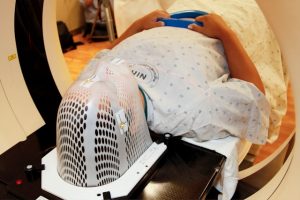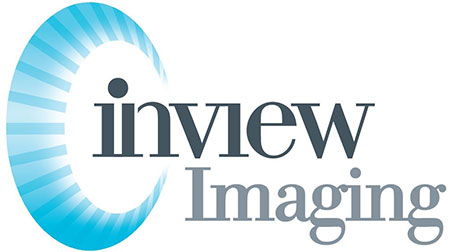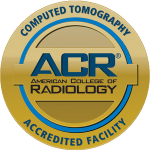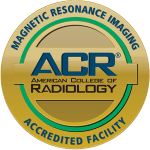Ever wondered how diagnostic imaging IT revolutionizes healthcare? Dive into the world of cutting-edge technology that streamlines medical processes, enhances accuracy, and improves patient care. From digital X-rays to advanced MRI systems, diagnostic imaging IT technology plays a pivotal role in modern medical practices, including computer tomographic images and image management. Are you ready to explore the innovative solutions, including technology and imaging technologies, that are shaping the future of healthcare delivery for doctors and imaging centers? Stay tuned as we uncover the impact and benefits of diagnostic imaging technology in transforming the way doctors diagnose and treat medical conditions.
Key Takeaways
-
Be Informed: Understand the different types of diagnostic imaging modalities available and how they can help in diagnosing medical conditions and screening for diseases.
-
Prepare Adequately: Prior to your imaging appointment, follow the preparation guidelines provided to ensure accurate results.
-
Act Promptly: Timely imaging is crucial for early detection and treatment of health issues, so don’t delay scheduling your appointments for screening, diagnosis, and brain.
-
Engage with Results: When navigating imaging results, consult with your healthcare provider to fully comprehend the findings and their implications.
-
Stay Updated: Embrace advancements in diagnostic imaging technology to benefit from more precise high-resolution diagnosis processes with computer assistance.
-
Prioritize Health: Recognize the significance of diagnostic imaging in diagnosis, screening, and addressing medical concerns effectively, while minimizing radiation exposure and detecting diseases.
Understanding Diagnostic Imaging
Definition and Purpose
Diagnostic imaging refers to a range of techniques used in the field of healthcare for diagnosis, screening, and therapy, creating visual representations of the interior of a body for clinical analysis. These imaging technologies play a crucial role in diagnosing various medical conditions, including brain disorders, by producing ultrasound images of organs, tissues, and bones. By utilizing imaging technologies such as X-rays, CT scans, MRIs, ultrasounds, and PET scans, healthcare professionals can accurately pinpoint the root causes of illnesses or injuries. This aids in formulating effective treatment plans tailored to each patient’s specific condition, diagnosis, diseases, ultrasound imaging, and technology.
The primary purpose of diagnostic imaging is to provide valuable insights for diagnosis into the internal structures of the body that are otherwise inaccessible during a physical examination. By capturing detailed images using imaging technologies, healthcare providers can visualize abnormalities, tumors, fractures, infections, and other issues that may be affecting a patient’s health for diagnosis. Furthermore, diagnostic imaging, based on high-resolution technology, plays a critical role in confirming medical diagnoses by offering concrete evidence obtained through these advanced technologies.
Importance in Healthcare
Diagnostic imaging, including radiation technology, holds immense importance in healthcare due to its ability to facilitate early disease detection, leading to timely interventions and improved patient outcomes. Through early detection enabled by high-resolution imaging technology tests, healthcare professionals can identify brain diseases at their initial stages when they are most treatable. This significantly enhances the chances of successful treatment and recovery for patients facing various health conditions, diseases.
The evolution of diagnostic imaging technology has revolutionized the field of healthcare by providing non-invasive methods for examining internal structures with high precision and detecting diseases. These advancements have not only enhanced diagnostic accuracy but also minimized risks associated with invasive procedures and imaging technologies. Patients benefit from reduced exposure to radiation and potential complications, shorter recovery times, and improved resolution due to the efficiency of diagnostic imaging techniques.
Types of Diagnostic Imaging

MRI and MRA Scans
MRI and MRA scans differ in imaging techniques, with MRI focusing on soft tissues and MRA specifically targeting blood vessels. MRI scans, commonly used to examine the brain, spine, joints, and internal organs for abnormalities, offer high resolution images without radiation. They provide detailed images without radiation exposure. In contrast, MRA scans play a crucial role in detecting diseases like aneurysms, stenosis, or other vascular abnormalities.
CT Scans
CT scans use X-rays to create cross-sectional images of the body, allowing for detailed views of bones, organs, and tissues. They are highly effective in diagnosing conditions such as tumors, fractures, and internal injuries quickly. CT scans also aid in planning treatments by providing precise information about the location and size of abnormalities.
Ultrasound Imaging
Ultrasound imaging involves using sound waves to generate real-time images of internal structures like organs or unborn babies in the womb. It is a noninvasive procedure that does not involve radiation exposure, making it safe for various medical applications. Ultrasounds are particularly beneficial in monitoring fetal development during pregnancy due to their safety and accuracy.
X-ray Techniques
X-rays work on the principle of passing radiation through the body to produce images that highlight density variations within tissues. They are commonly used to diagnose bone fractures by capturing clear images of skeletal structures. X-rays help detect conditions like pneumonia or lung cancer by revealing abnormalities in the lungs or chest area swiftly and painlessly.
Mammography
Mammography is vital for screening breast cancer, utilizing low-dose X-rays to detect early signs of abnormal tissue growth in the breasts. Regular mammograms significantly improve survival rates by enabling early detection and prompt treatment initiation for breast cancer patients. The procedure is essential for women’s health as it aids in identifying potential issues at an early stage.
Specialized Imaging Techniques
Bone Density Scans
Bone density scans, also known as dual-energy X-ray absorptiometry (DEXA) scans, are crucial in diagnosing osteoporosis by measuring bone mineral density. These scans help assess fracture risk by detecting bone weakening and thinning over time. Monitoring bone health with regular DEXA scans is vital for evaluating the effectiveness of osteoporosis treatments. Early detection through these scans plays a key role in preventing fractures, especially in individuals at risk due to age or other factors.
Arthrogram Procedures
Arthrogram procedures involve injecting contrast dye into a joint to enhance visibility during imaging tests like X-rays, MRI, or CT scans. This process aids in diagnosing various joint conditions such as tears, inflammation, or abnormalities. By utilizing advanced imaging techniques coupled with contrast dye, arthrograms provide detailed visuals of joint structures for accurate diagnosis. Furthermore, arthrograms play a significant role in guiding treatment decisions for joint issues by pinpointing the exact location and nature of the problem.
Myelogram for Spine
Myelograms are specialized imaging tests used to diagnose spinal cord and nerve root problems by visualizing the spinal canal. During this procedure, a contrast dye is injected into the spinal canal to highlight any abnormalities or blockages affecting the nerves. Myelograms are essential for identifying conditions like herniated discs or spinal stenosis that may not be clearly visible on standard imaging tests. Moreover, these tests play a crucial role in guiding treatment plans by providing detailed insights into spinal abnormalities.
The Role of Diagnostic Imaging
Early Detection
Early detection significantly improves treatment outcomes for various health conditions. Diagnostic imaging is crucial in detecting diseases at an early stage, enabling timely intervention. The benefits include increased survival rates and reduced complications.
Diagnostic imaging plays a vital role in monitoring the progression of chronic health conditions. It helps healthcare providers track changes in the body over time, aiding in effective management of long-term health issues. Regular imaging is essential for proactive health monitoring.
Monitoring Health Conditions
Imaging tests are instrumental in guiding healthcare providers to develop personalized treatment plans. They help determine the most effective treatment approaches based on detailed diagnostic information. Accurate diagnostic imaging is key to ensuring successful treatment outcomes.
Diagnostic imaging services are essential in guiding treatment plans by providing detailed insights into the patient’s condition. These results enable healthcare providers to tailor treatments according to individual needs, enhancing the effectiveness of interventions. Precision in diagnostic imaging leads to better patient outcomes.
Guiding Treatment Plans
The use of advanced diagnostic tools enhances the accuracy and efficiency of treatment planning processes. By leveraging sophisticated imaging technologies, healthcare providers can create precise and targeted treatment strategies for patients. This tailored approach improves the overall quality of care provided.
Diagnostic workflow optimization through innovative imaging techniques streamlines the treatment planning process, reducing delays and improving patient satisfaction. Efficient utilization of diagnostic imaging services ensures timely interventions and enhances patient outcomes. Integration of advanced technologies enhances the overall efficiency of healthcare delivery systems.
Preparing for Your Imaging Appointment
What to Expect
When preparing for diagnostic imaging appointments, patients should be informed about the procedures and test durations. By explaining the process beforehand, patients can feel more comfortable and less anxious during the tests. Understanding what to expect helps in reducing stress levels.
Patients should also be aware of any specific preparations required before undergoing certain imaging tests. For instance, fasting might be necessary for some tests like an MRI or CT scan. Clear communication regarding these preparations ensures that patients are ready and the tests yield accurate results.
It is crucial for patients to follow instructions provided by healthcare providers before diagnostic imaging procedures. Adhering to these guidelines enhances the quality of imaging results, leading to more precise diagnoses and effective treatment plans. Compliance with instructions plays a significant role in the overall success of the imaging process.
How to Schedule
Efficient scheduling of imaging centers appointments is essential for timely diagnosis and treatment. Patients can streamline this process by contacting the facility promptly after receiving a referral from their healthcare provider. Prompt action helps in securing early appointment slots.
When scheduling multiple diagnostic imaging tests, patients need to consider factors such as test compatibility, time intervals between tests, and overall convenience. Coordinating various appointments efficiently ensures that all necessary imaging procedures are completed within a suitable timeframe.
Timely scheduling is critical as it allows healthcare providers to promptly assess results, make accurate diagnoses, and initiate appropriate treatments without delays. Patients should prioritize setting up their imaging appointments promptly to expedite their medical care journey.
The Importance of Timely Imaging
Benefits of Early Detection
Early detection through diagnostic imaging plays a crucial role in improving patient prognosis. By identifying issues at an initial stage, healthcare providers can implement timely interventions, leading to better treatment outcomes. This proactive approach significantly enhances the chances of successful recovery and long-term health maintenance.
Diagnostic imaging enables healthcare professionals to detect abnormalities early on, allowing for prompt initiation of appropriate treatments. This early intervention not only improves patient outcomes but also reduces the need for more extensive and invasive procedures later on. It helps in preventing the progression of diseases, ultimately enhancing the overall quality of care provided to patients.
One significant benefit of early detection through diagnostic imaging is its positive impact on reducing healthcare costs. By identifying conditions in their nascent stages, medical professionals can address them more efficiently and cost-effectively. This leads to a decrease in unnecessary hospitalizations, surgeries, and other expensive interventions, resulting in substantial savings for both patients and healthcare systems.
Impact on Treatment Success
Accurate diagnostic imaging directly influences treatment success rates by providing vital information about the condition being treated. The precise details obtained from imaging tests guide healthcare providers in formulating effective treatment plans tailored to each patient’s specific needs. As a result, patients receive personalized care that maximizes the likelihood of successful outcomes.
The results obtained from diagnostic imaging procedures significantly impact treatment decisions made by healthcare teams. These results help physicians determine the most appropriate course of action based on the nature and extent of the condition identified. By leveraging this information, medical professionals can optimize treatment strategies, ensuring that patients receive interventions that are most likely to yield positive results.
Diagnostic imaging plays a critical role in verifying the effectiveness of treatment interventions over time. By periodically conducting follow-up imaging studies, healthcare providers can assess how well a particular treatment is working and make necessary adjustments if needed. This iterative process ensures that patients receive ongoing care that is responsive to their evolving health status.
Navigating Imaging Results
Understanding Your Results
Patients should guide themselves in interpreting diagnostic imaging results accurately. Understanding common terminology used in imaging reports is crucial for better comprehension. Discussing results with healthcare providers ensures proper interpretation and clarity.
Next Steps after Diagnosis
After receiving a diagnosis through diagnostic imaging, patients must be prepared for the possible next steps. Follow-up appointments and additional tests are essential for effective treatment planning. Healthcare providers play a vital role in guiding patients through the subsequent stages of their healthcare journey.
Future of Diagnostic Imaging
Technological Advances
The future of diagnostic imaging is shaped by rapid advancements in technology. Future availability of cutting-edge tools like MRI, CT scans, and PET scans will transform healthcare. These technologies offer detailed insights into the body’s internal structures with remarkable clarity. New imaging techniques such as 3D mammography and digital breast tomosynthesis are revolutionizing early cancer detection. These innovations not only improve diagnostic accuracy but also reduce the need for invasive procedures, enhancing patient comfort.
In the coming years, artificial intelligence (AI) integration in diagnostic imaging is set to streamline processes and enhance efficiency. AI algorithms can analyze vast amounts of imaging data quickly, assisting radiologists in making more accurate diagnoses. This fusion of AI and imaging technologies holds immense potential in improving healthcare outcomes by enabling faster diagnosis and treatment initiation. The future promises a more personalized approach to patient care through tailored treatment plans based on precise imaging results.
Improving Patient Care
Diagnostic imaging plays a pivotal role in advancing patient care across various medical specialties. By providing detailed insights into internal organs and tissues, imaging tests aid physicians in making accurate diagnoses and formulating effective treatment strategies. Personalized treatment plans based on imaging findings lead to better patient outcomes and increased satisfaction levels among individuals undergoing medical procedures.
Continuous advancements in diagnostic imaging techniques contribute to enhanced healthcare delivery by enabling early disease detection and monitoring treatment responses effectively. The evolution of non-invasive imaging modalities ensures reduced patient discomfort during diagnostic procedures while maintaining high diagnostic accuracy levels. As healthcare providers strive for excellence in patient care, the ongoing refinement of diagnostic imaging practices remains crucial for achieving optimal health outcomes.
Summary
Understanding the various diagnostic imaging techniques available can empower you to take charge of your health. By knowing what to expect during imaging appointments and how to interpret results, you can actively participate in your healthcare journey. The future of diagnostic imaging holds promising advancements that aim to enhance accuracy and efficiency, ensuring better outcomes for patients. Stay informed and engaged in your imaging process to make informed decisions about your health.
Take control of your health by staying proactive and informed about diagnostic imaging. Embrace the evolving technologies and advancements in this field to ensure timely and accurate diagnoses. Your active involvement in understanding and navigating diagnostic imaging can significantly impact your overall well-being. Keep abreast of the latest trends and developments in diagnostic imaging to make confident decisions regarding your health.
Frequently Asked Questions
What is diagnostic imaging and how does it work?
Diagnostic imaging is a non-invasive method used to produce images of the body’s internal structures, aiding in the diagnosis of medical conditions. It works by using various technologies such as X-rays, MRI, CT scans, and ultrasound to create detailed images for healthcare professionals to analyze.
How can I prepare for my diagnostic imaging appointment?
To prepare for your diagnostic imaging appointment, follow any specific instructions provided by your healthcare provider. Wear comfortable clothing and avoid wearing jewelry or metal objects. Inform the staff about any medical conditions or medications you are taking that may affect the imaging procedure.
What are some common types of diagnostic imaging techniques?
Common types of diagnostic imaging techniques include X-rays, computed tomography (CT) scans, magnetic resonance imaging (MRI), ultrasound, and nuclear medicine scans. Each technique has unique benefits and is used based on the specific medical condition being evaluated.
Why is timely imaging important for diagnosing medical conditions?
Timely imaging is crucial as it allows healthcare providers to detect and diagnose medical conditions early, leading to better treatment outcomes. Early detection through imaging can help prevent disease progression and improve patient prognosis by enabling prompt intervention and management strategies.
What can I expect when navigating through my diagnostic imaging results, tomographic images, diagnosis, radiation exposure, and image quality?
When navigating through your diagnostic imaging results, you can expect clear explanations from your healthcare provider regarding the findings. They will discuss the implications of the results on your health, provide guidance on next steps or additional testing if needed, and collaborate with you on developing a treatment plan tailored to your condition.


